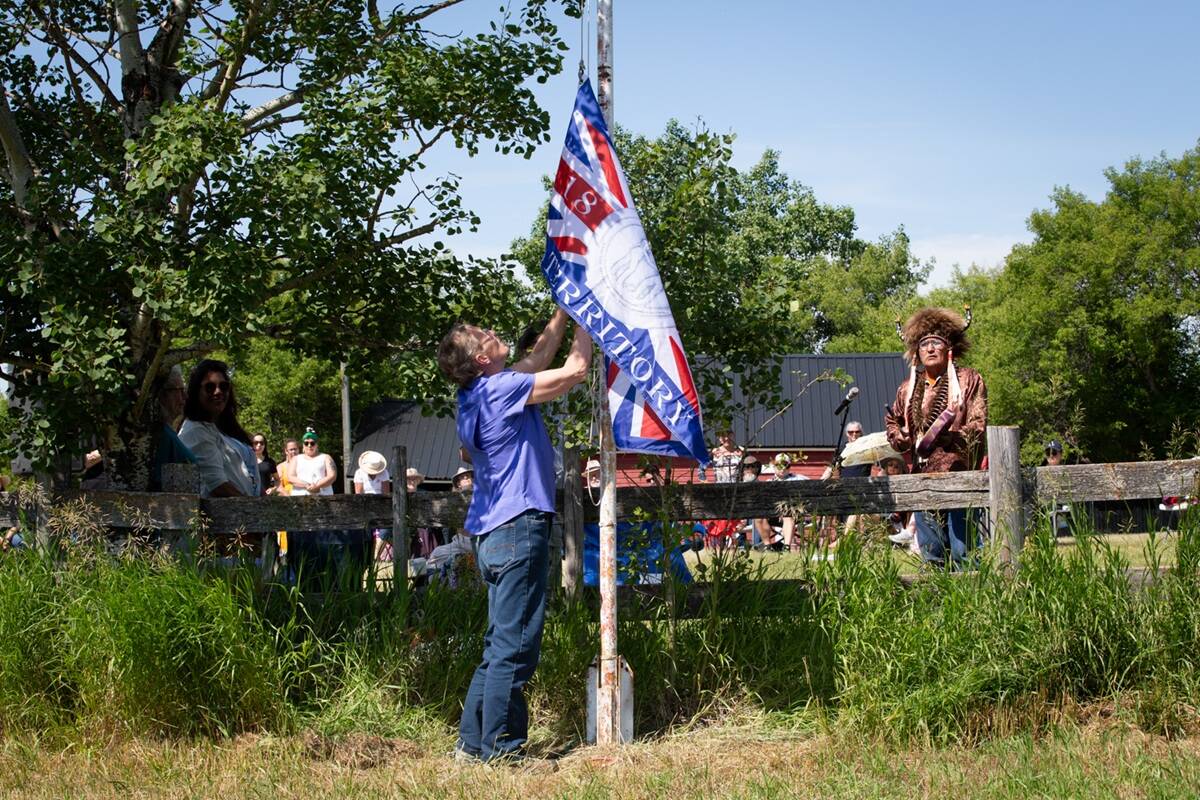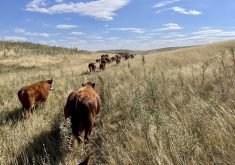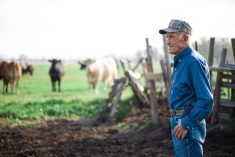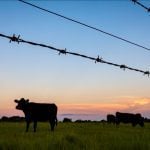When it comes to passing the ranch down, the biggest obstacle may not lie between parents and children but rather between siblings. While researching this story, I learned that families are focusing on the next next generation and that “the cousin consortium” refers to a messy web of competing interests and unspoken expectations that can easily derail even the best-laid succession plans.
I spoke with succession planning expert Annessa Good-Hassard to explore the generational differences and conflicting visions that often emerge during succession planning. She shared her insights about the “builders” versus “progressives” dynamic and emphasized the need for clear communication and being proactive.
Mediating sibling conflicts
Read Also

Treaty Land Sharing Network expands reach in Saskatchewan and Alberta
The Treaty Land Sharing Network, which connects land holders with First Nations and Metis people, has expanded since it began in 2018
Most of the time, parents must initiate critical conversations about expectations and help siblings find common ground. The parents’ role goes beyond setting expectations — they may need to actively mediate or “referee” conflicts that can arise between siblings.
“I call them builders, not boomers, as this generation never stops building,” Good-Hassard says. She adds that the senior generation’s experience and perspective are crucial in guiding siblings through their transition plan, complex dynamics and finding solutions.
Good-Hassard says that at the beginning of this process, parents must “lead the dance” in succession planning, setting the tone and framework for productive sibling conversations and decision-making. Their role as mediators is essential for overcoming the “sibling hurdle” in passing the ranch to the next generation. However, it is just as critical that parents prepare to step back and let siblings see how, and if, they actually can work and problem-solve together — without the parents (a.k.a. referees) interfering. If the parents have been mediating for years, how can anyone expect these siblings to succeed when the referees are no longer present? This will affect how the business is structured and how the long-term transition and estate plan is crafted to respect these family dynamics.
Sibling and cousin dynamics
Good-Hassard has seen first-hand how the focus on the parent-child transition can often overshadow the importance of navigating sibling and cousin relationships during the succession process.
“Unspoken expectations are the silent killers of family farms,” she says.
One of the key questions she asks families is how many generations they are planning for.
“Are we planning for just the sibling level, or are we considering the future grandchildren (cousin) generation?”
The complexities arise from a variety of factors. Each sibling may have a fundamentally different vision for the ranch’s future. One child may be eager to expand and diversify the operation aggressively. Meanwhile, another sibling actively involved in the business may prioritize a more cautious, lifestyle-focused approach to preserve the ranch’s traditions and stability. These contrasting viewpoints can create tension that, if left unaddressed, festers into deeper conflicts and resentment. Eventually, contrasting opinions may influence each sibling’s income opportunities and operation growth potential.
Adding to the challenge is that many ranch families are transitioning not just the business but also significant land and asset holdings. “If we’re transferring land to a non-farm child as well, a question may be, why does one child potentially get to inherit free and clear, while another child doesn’t?”
She says there’s no right or wrong answer. “My job is to start asking some of those thought-provoking questions.”
Fair versus equal
These questions can lead to heated discussions and resentments, especially regarding issues of fair versus equal distribution. “In society, it sometimes seems that if the off-farm child sells land, they’re a smart investor, but if a farming child sells land, the perception may be that they’re going to be haunted from their parents’ grave.”
This emotional weight of succession planning is deeply embedded in family history, tradition and expectations. Parents often struggle to ensure each child is treated fairly. Yet fairness does not always mean an equal split. While one child may have dedicated their life to running the ranch, another may have pursued a career elsewhere. Should they receive an equal share of the assets despite their differing contributions?
Communication and planning
Good-Hassard emphasizes the importance of proactive communication and establishing clear policies and agreements to navigate these treacherous waters. “We have to be very cognizant of our language,” she says. “I don’t like the word ‘control’ — I like the word ‘protect.’” This shift in mindset is crucial, as it allows families to focus on safe-guarding the interests of all involved rather than trying to exert control over the process.
Good-Hassard suggests assembling a well-rounded team of advisors — including transition specialists, lawyers, accountants and financial planners — to guide ranch families through succession planning. She encourages families to thoughtfully assess their current advisors and, if necessary, expand their team to ensure they have the right expertise. Rather than introducing multiple new advisors at once, which can disrupt family dynamics, she advocates for a deliberate approach that balances fresh perspectives with continuity. Since nearly 90 per cent of family businesses change advisors when the next generation takes over, having a trusted advisory team can provide stability and help avoid common pitfalls in succession planning.
The cousin consortium
One key tool Good-Hassard suggests for operations with cousin consortiums is the use of operational agreements. These formal documents outline the roles, responsibilities and expectations of all family members involved in the ranch. They can also include both farm and non-farm heirs.
“It’s a messy dynamic, because there’s no hierarchy.” Without clear guidelines, she has seen families struggle with issues such as who gets to work for which uncle, or which cousin has the authority to make certain decisions.
Compensation and equity
A critical question with this dynamic is how the junior generation (cousin level) is currently being compensated and how they anticipate being compensated in the future. Does compensation come from the joint operating business, or is the cousin generation compensated from each of their parent’s net income? This can affect family dynamics very quickly, depending on how they are structured.
The cousin consortium agreement helps to establish these boundaries and decision-making processes up front, preventing the kind of resentment and conflict that can tear families apart. Good-Hassard emphasizes that these agreements must be reviewed regularly and updated as circumstances change.
Further to the cousin consortium agreement, Good-Hassard recommends that families establish clear compensation and equity policies. She has found that unspoken expectations around these issues are a major source of tension between siblings.
“We have to start actually to understand what’s going out of the business.”
This includes tracking not just cash compensation but also the value of perks such as housing, vehicles and other farm-related benefits. By making these elements transparent and subject to regular review, families can avoid the kind of resentment that can build when one sibling feels they are being unfairly compensated compared to their brothers or sisters. For example, if one sibling is living on the ranch rent-free while another pays for their own home, the disparity needs to be acknowledged and addressed in a way that is agreed upon by all parties.
Psychological aspects of succession
Beyond the legal and financial considerations, ranch succession has deep emotional and psychological aspects that cannot be ignored. Many ranchers struggle with the idea of “letting go” of the operation they have spent their lives building. This can result in prolonged decision-making processes and a reluctance to fully empower the next generation.
Siblings and cousins also bring their own emotional baggage into the process. Long-standing rivalries, perceived parental favouritism and differing work ethics can all play a role in complicating succession discussions.
To address these challenges, families must prioritize open and honest communication. Regular family meetings, facilitated discussions with a neutral third party, and even therapy or mediation can all be valuable tools in ensuring relationships remain intact throughout the transition process.
Ultimately, Good-Hassard believes that the key to overcoming the sibling hurdle in ranch succession is a combination of proactive communication, formal agreements and a willingness to adapt as circumstances change.
“If we can really prioritize and commit to being proactive, I would say that’s the biggest thing our generation can do.”
By addressing sibling and cousin dynamics head-on, ranch families can avoid the pitfalls that have derailed so many succession plans in the past.
Final thoughts
The transition of a ranch from one generation to the next is rarely a simple process, but with careful planning, open communication and a commitment to fairness over strict equality, families can preserve both their operations and their relationships.
Ultimately, there will be a need for patience and understanding as the younger generation takes on more management duties while the senior generation steps back. So, remember to grant each other grace as families navigate the changing roles and responsibilities within the operation. After all, as Good-Hassard eloquently puts it, “How blessed are we to have a family legacy.”
– Billi J. Miller is a published author, photographer and speaker from east-central Alberta. She freelances from her home office, where she can be reached through her website at billijmiller.com.
















